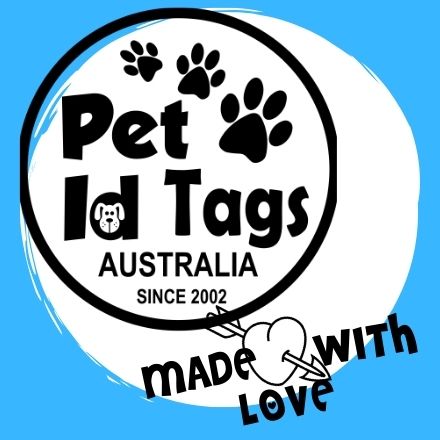Are you a proud dog owner? Then you know how important it is to keep your four-legged friend safe and secure. That’s where tagging comes in. In this comprehensive overview of tagging dogs, we’ll take a closer look at why it’s so important and the benefits it brings.
Tagging dogs is a simple yet effective way to ensure their identification and safety. It involves attaching a tag to your dog's collar with essential information, such as their name, your contact details, and any medical conditions they may have. This way, if your furry friend ever gets lost, whoever finds them can easily contact you and ensure their prompt return.
But it's not just about safety - tagging dogs also has several other benefits. It helps to establish a sense of ownership, deter theft, and can even lead to faster medical attention in case of emergencies. Additionally, some areas have legal requirements for dogs to be tagged, so it's essential to understand the regulations in your locality.
So, join us as we delve into the world of tagging dogs and discover why it's a vital practice for every responsible dog owner.
Why is tagging dogs important?
Tagging dogs is a crucial practice for several reasons. First and foremost, it helps ensure the safety and well-being of your canine companion. Dogs are naturally curious and can easily wander off, especially when they catch an interesting scent or spot a squirrel. If your dog gets lost, a tag with your contact information can significantly increase the chances of a swift reunion.
Additionally, tagging dogs establishes a sense of ownership. In the unfortunate event that someone tries to claim your dog as their own, a tag with your contact details serves as proof that you are the rightful owner. It can help prevent heartbreaking situations where dogs are wrongfully taken away from their loving families.
Moreover, tagging dogs can be a lifesaver in emergencies. If your dog is injured or experiences a medical emergency while outside, a tag with vital information, such as any medical conditions or allergies, can provide crucial details to first responders or Good Samaritans who find your dog. This information can be the difference between life and death, ensuring your dog receives the necessary medical attention promptly.
Types of dog tags
When it comes to tagging dogs, there are various types of dog tags available in the market. The most common type is the traditional metal tag that attaches to your dog's collar. These tags are durable and come in different shapes, sizes, and designs. They can be engraved with your dog's name, your contact information, and any other relevant details.
Another type of dog tag gaining popularity is the QR code tag. These tags contain a unique QR code that, when scanned with a smartphone, directs the scanner to a webpage with your dog's information. This digital approach provides more space for additional details, such as multiple contact numbers, medical records, and even a photo of your dog. QR code tags offer convenience and ease of use for both dog owners and those who find lost dogs.
In recent years, GPS dog tags have also emerged in the market. These tags utilize GPS technology to track your dog's whereabouts in real-time. They are especially useful for dogs that frequently wander or for owners who want to keep a close eye on their pet's movements. With a GPS dog tag, you can quickly locate your dog using a smartphone app, ensuring their safety and giving you peace of mind.
Benefits of tagging dogs
Tagging dogs offers a wide range of benefits for both dog owners and their furry friends. The primary benefit is the increased likelihood of a lost dog being reunited with their owner. Dogs are curious creatures prone to wander, and even the most well-trained and obedient dogs can escape or get lost. Having a tag with your contact information makes it much easier for someone who finds your dog to reach out and return them to you promptly.
Another benefit of tagging dogs is the establishment of a sense of ownership. Dogs that wear tags are less likely to be mistaken for strays or taken by someone who might claim them as their own. A visible tag with your contact details clearly establishes that the dog has a loving and responsible owner, reducing the chances of misunderstandings or theft.
Tagging dogs also improves the chances of receiving faster medical attention in case of emergencies. Accidents and health emergencies can happen anywhere, and having a tag with essential medical information can provide crucial details to first responders or Good Samaritans who find your dog. This information can help them make informed decisions and provide appropriate care until you can be reached.
Additionally, some areas have legal requirements for dogs to be tagged. Failure to comply with these regulations can result in fines or other legal consequences. By tagging your dog, you not only ensure their safety but also demonstrate your commitment to being a responsible dog owner and a law-abiding citizen.
How to choose the right dog tag
Choosing the right dog tag for your furry friend is an important decision. It's essential to consider factors such as durability, readability, and personalization options. Here are some tips to help you choose the perfect tag for your dog:
1. Material: Opt for tags made from durable materials like stainless steel or brass. These materials are resistant to wear and tear, ensuring that the tag remains legible and intact even after years of use.
2. Size and shape: Consider the size and shape of the tag based on your dog's breed and collar. The tag should be large enough to accommodate all the necessary information but not too bulky or heavy for your dog to comfortably wear.
3. Engraving: Look for tags that offer deep, clear engraving. The information on the tag should be easily readable and resistant to fading over time. High-quality engraving ensures that the tag remains effective in identifying your dog, even after prolonged use.
4. Personalization: Choose a tag that allows for customization. Along with your dog's name and your contact information, you may want to include any medical conditions, dietary restrictions, or other relevant details. Personalizing the tag with these additional details can help ensure your dog's safety and well-being.
Remember, the tag you choose will be an essential part of your dog's identification, so take the time to select one that meets your specific needs and preferences.
Engraving information on dog tags
Once you have chosen the perfect dog tag, it's time to engrave the necessary information. Before you start, gather all the relevant details, including your dog's name, your contact information (phone number and address), and any medical conditions or allergies your dog may have. Here are some tips for engraving information on dog tags:
1. Clear and legible: Ensure that the engraving is clear and legible. Use a font size and style that is easy to read, even from a distance. Avoid fancy or elaborate fonts that may be difficult to decipher.
2. Accuracy: Double-check all the information before engraving it onto the tag. A small mistake, such as a wrong digit in your phone number, can render the tag useless. Take your time and ensure the accuracy of each detail.
3. Condense information: If you have limited space on the tag, consider condensing the information. Use abbreviations or acronyms where appropriate to fit all the necessary details without compromising legibility.
4. Backup information: In case there's limited space on the tag, consider including a backup identification method. For example, you can add a small note with additional information, such as your dog's microchip number, inside a waterproof pouch attached to the collar.
By following these tips, you can ensure that the information on your dog's tag is accurately engraved and easily readable, maximizing the chances of a successful reunion in case your dog goes missing.
Common mistakes to avoid when tagging dogs
While tagging dogs is a relatively straightforward process, there are some common mistakes that dog owners should avoid. These mistakes can render the tag ineffective or even put your dog's safety at risk. Here are a few common mistakes to watch out for:
1. Inadequate contact information: Ensure that your contact information is up to date and accurate. If your phone number or address changes, make sure to update the information on the tag promptly. An outdated contact number or address defeats the purpose of tagging your dog.
2. Using ineffective attachment methods: The tag should be securely attached to your dog's collar to prevent it from getting lost or detached. Avoid using flimsy or weak attachment methods that can easily break, such as lightweight keychain rings. Instead, opt for sturdy attachment options like split rings or strong clips.
3. Choosing tags that are too heavy or bulky: While it's important to choose a durable tag, avoid tags that are too heavy or bulky for your dog to comfortably wear. Heavy tags can be uncomfortable and may even cause injuries or discomfort to your dog's neck. Select a tag that strikes a balance between durability and comfort.
4. Neglecting to update information: Regularly review and update the information on your dog's tag. Contact numbers, addresses, or even your dog's name may change over time. Failure to update the information can hinder the efforts of anyone trying to contact you in case your dog gets lost.
By being aware of these common mistakes and taking the necessary precautions, you can ensure that your dog's tag remains effective and serves its purpose of keeping your furry friend safe and identifiable.
Alternatives to traditional dog tags
While traditional dog tags are the most common form of identification for dogs, there are some alternatives worth considering. These alternatives can provide additional layers of identification and security, complementing the effectiveness of traditional tags. Here are a few alternatives to traditional dog tags:
1. Microchipping: Microchipping involves injecting a small chip under your dog's skin, typically between the shoulder blades. The chip contains a unique identification number that can be scanned by a veterinarian or shelter using a specialized reader. Microchips are a permanent form of identification and can be a valuable backup if a dog loses their collar or tags.
2. Tattoos: Tattooing your dog with identification information is another option to consider. Tattoos are typically placed on the inner ear or inner thigh. They provide a visible and permanent form of identification that cannot be easily removed or lost. However, it's essential to ensure that the tattoo is done by a professional and complies with local regulations.
3. Digital tags: Digital tags, such as QR code tags mentioned earlier, provide a convenient and modern way to identify your dog. These tags can store a vast amount of information, including multiple contact numbers, medical records, and even a photo of your dog. They offer ease of use for both dog owners and those who find lost dogs.
While these alternatives can be beneficial, they should not replace traditional tags. Instead, they should be used in conjunction with tags to provide additional layers of identification and security for your dog.
How to properly attach a dog tag
Properly attaching your dog's tag is essential to ensure it remains securely in place. A well-attached tag reduces the risk of it falling off or getting lost. Here are some steps to follow when attaching a dog tag:
1. Choose a suitable collar: Ensure that your dog's collar is sturdy and properly fitted. The collar should be comfortable for your dog to wear while also providing a secure attachment point for the tag.
2. Position the tag: Ideally, the tag should be attached to the collar's D-ring, which is typically located near the buckle. This placement ensures that the tag is visible and easily accessible. Avoid attaching the tag to any loose or dangling parts of the collar, as they can be a potential safety hazard.
3. Secure the attachment: Use a reliable attachment method to secure the tag to the collar. Split rings or strong clips are commonly used options. Ensure that the attachment is tight and secure, but not so tight that it restricts your dog's movement or causes discomfort.
4. Regularly check the attachment: Periodically inspect the tag and attachment to ensure they remain in good condition. Over time, the attachment may loosen or wear out, potentially leading to a lost tag. By checking the attachment regularly, you can address any issues promptly and keep your dog's tag securely in place.
Properly attaching your dog's tag is a simple yet crucial step in ensuring their identification and safety. By following these steps, you can have peace of mind knowing that your dog's tag is securely attached and visible to anyone who might find them.
Importance of updating dog tag information
While tagging your dog is an essential step, it's equally important to regularly update the information on the tag. Over time, contact numbers, addresses, or even your dog's name may change. Failure to update the information can render the tag ineffective and hinder the efforts of anyone trying to contact you in case your dog gets lost.
Here are a few reasons why updating dog tag information is crucial:
1. Ensures effective communication: Your dog's tag serves as a means of communication between you and whoever finds your lost pet. By keeping the information up to date, you enable effective communication and increase the chances of a successful reunion.
2. Reflects responsible ownership: Updating your dog's tag information reflects your commitment to being a responsible dog owner. It shows that you take your dog's safety seriously and are proactive in ensuring their well-being.
3. Complies with legal requirements: Some areas have legal requirements for dogs to be tagged with accurate and up-to-date information. By updating your dog's tag information, you ensure compliance with local regulations and avoid any potential legal consequences.
4. Prevents delays in reuniting with your dog: In the event that your dog gets lost, every second counts. Having outdated information on the tag can delay the process of reuniting with your furry friend. By updating the information promptly, you minimize the time it takes for someone to contact you and arrange for your dog's return.
Regularly reviewing and updating your dog's tag information is a small but significant step in ensuring their safety and increasing the likelihood of a swift reunion if they ever get lost.
Conclusion
Tagging dogs is not just about safety; it's a responsibility that every dog owner should take seriously. By attaching a tag to your dog's collar, you provide a simple yet effective way for them to be identified and returned to you if they ever get lost. Tagging dogs establishes a sense of ownership, deters theft, and can even lead to faster medical attention in emergencies.
When choosing a dog tag, consider factors such as durability, readability, and personalization options. Engrave the necessary information clearly and accurately to maximize the tag's effectiveness.



